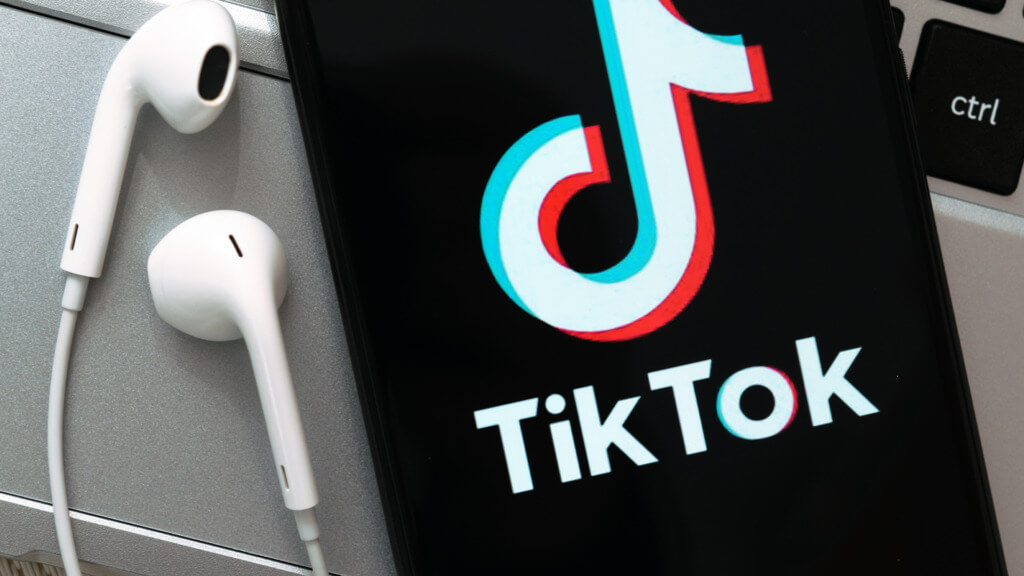Snapchat’s debut in the vast universe of social media was akin to a bright star bursting onto the scene. Its unique proposition, ephemeral photos and videos, carved a niche in an already crowded space. It was a breath of fresh air, challenging the conventions of permanence that platforms like Facebook and Instagram advocated. Here was a platform that celebrated the transient nature of moments, allowing its user base, primarily younger demographics, to revel in the authenticity of ‘now’. The impermanent nature of snaps mirrored the fleeting moments of adolescence – powerful yet evanescent.
However, it wasn’t just the ephemerality that made Snapchat a hit. It was its commitment to fostering genuine connections. By ensuring that content would disappear after viewing, users felt a sense of freedom, liberated from the usual anxieties of digital footprints. This emphasis on the ‘real’ and ‘raw’ attracted millennials and Gen Z users, weary of the polished facades on other platforms.
But as with all innovations, the landscape soon shifted. Enter TikTok: a dynamic platform that blended the allure of short video content with a sophisticated algorithm ensuring users stayed hooked. Suddenly, the short-lived video content which was Snapchat’s territory became a global playground. TikTok’s meteoric rise was nothing short of phenomenal. It wasn’t just about videos but about communities, challenges, dance-offs, and viral trends. The platform became a powerhouse of creativity, setting the stage for the ‘TikTok phenomenon’ that swept continents.
For Snapchat, the rise of TikTok posed an existential problem. How could it differentiate itself in a world where its unique selling proposition was no longer unique? This challenge saw Snapchat leaning further into its strengths. The platform doubled down on its Augmented Reality (AR) capabilities, introduced engaging lenses, and broadened its storytelling canvas with Snap Maps and Stories. The aim was clear: while TikTok might dominate the video narrative, Snapchat would remain the platform for genuine connections and immersive experiences.
Yet, the journey wasn’t without its hurdles. As TikTok began to lure away influencers with its burgeoning creator economy, Snapchat had to introspect and strategise. The result was a series of partnerships, ad innovations, and features designed to retain and grow its user base. For instance, Snapchat’s ‘Discover’ feature offered curated content from leading publishers, merging news with entertainment to engage users further.
Snapchat’s Augmented Reality (AR) odyssey
In the vast universe of digital innovation, Snapchat carved a distinctive niche early on by embracing Augmented Reality (AR). While the app’s initial charm revolved around ephemeral messaging, its dive into AR truly set it apart from its contemporaries. Snapchat transformed from another messaging app to an immersive playground where reality melded seamlessly with the virtual. It wasn’t just about sending pictures but about augmenting those pictures with playful, fantastical elements.
For instance, the app’s initial introduction of filters seemed like simple, whimsical additions. But they were just the tip of the iceberg. These interactive filters, which could overlay puppy ears on a user or swap faces with a friend, were early indicators of Snapchat’s AR ambitions. They transformed mundane selfies into moments of delight and engagement, offering users a taste of AR’s potential. As these features became synonymous with the Snapchat experience, their widespread popularity encouraged the platform to dig deeper into the world of augmented reality.

The groundbreaking moment came with the unveiling of the AR Shopping Lenses. In an era where online shopping was becoming increasingly dominant, Snapchat astutely recognised the void between trying products and purchasing them online. The AR Shopping Lenses elegantly bridged this gap, letting users try on virtual shoes, drape themselves in digital dresses, or experiment with makeup shades. This wasn’t just AR for fun but with a practical, transformative purpose. The fusion of the virtual and honest in online shopping enhanced user engagement and hinted at the future of e-commerce.
Behind this surge of innovation was Bobby Murphy, the technological savant co-creating the Snapchat experience. His vision for AR wasn’t just about fleeting fun but about embedding AR into the everyday user experience. Under his guidance, the platform launched initiatives like the ‘Landmarkers‘, turning famous global landmarks into dynamic, AR-infused spectacles. Whether the Eiffel Tower bursting into a shower of golden butterflies or New York’s Flatiron Building enveloped in a digital snowstorm, these augmented experiences transformed how users interacted with the world around them.
However, as Snapchat was enjoying its renaissance in AR, the shadows of a new competitor began to emerge. The digital landscape, ever-shifting and volatile, was about to be reshaped by another player. The question for Snapchat was straightforward: how would it respond, adapt, and continue its AR odyssey in the face of fresh competition?
Navigating the waves: Snapchat in the age of TikTok
Like a vast ocean, social media has its tides, currents, and storms. Each emerging platform seeks to ride a unique wave, hoping to achieve sustained prominence. For Snapchat, its distinguishing wave was ephemeral content – a refreshing antidote to the permanence of other platforms. Yet, as the digital seascape evolved, a formidable new wave emerged on the horizon: TikTok.
TikTok’s ascent was nothing short of meteoric. Born from the fusion of apps like Musical.ly, TikTok stormed the social media beachfront with simplicity and virality, taking the world by storm. Its premise was straightforward: short, looping videos and various editing tools that made every user a potential content creator. Its charm lay in the content and how it was discovered. Like an intuitive DJ, TikTok’s algorithm played ‘hits’ one after the other, ensuring users were glued, endlessly scrolling for that next dopamine hit.
For the younger generation, TikTok’s allure was undeniable. Here was a platform that encouraged creativity, celebrated spontaneity, and offered a shot at viral fame. In this new landscape, Snapchat’s once revolutionary ephemeral content began to feel less unique. The idea of content that disappeared after a day was no longer the singular draw, especially when juxtaposed against TikTok’s dynamic content, which, though not ephemeral, felt fresh and ever-changing.
But Snapchat, built on a foundation of innovation, was never one to stagnate in the face of competition. Recognising the magnetic pull of TikTok’s video format, Snapchat responded with ‘Director Mode‘. Launched in 2022, this feature was more than just a nod to TikTok’s success; it was an affirmation of Snapchat’s adaptive DNA. Director Mode empowered Snapchatters to embrace more extensive video storytelling, melding the platform’s inherent spontaneity with the more crafted, curated vibe TikTok had popularised. It offered tools that let users capture a variety of perspectives, harnessing both front and rear cameras simultaneously and providing a more immersive storytelling experience.
Snapchat’s pivot wasn’t just about emulating its competitors but integrating the best of the digital zeitgeist into its unique framework. In the fast-paced world of social media, survival isn’t just about originality but adaptability. And as Snapchat navigated the TikTok tide, it showcased a resilience and willingness to evolve that kept its boat sailing, even in turbulent waters.
Snapchat’s evolution in the age of TikTok
As the social media landscape underwent seismic shifts with the entry of platforms like TikTok, Snapchat, an already established player, faced a new challenge. Rather than being daunted, Snapchat took a proactive stance, seeking opportunities to refine its identity and solidify its niche.

The inception of TikTok, with its quick, captivating video content and uncanny knack for understanding the teenage psyche, put pressure on Snapchat’s ephemeral content model. However, Snapchat’s answer was both strategic and innovative. In 2022, the platform unveiled Snapchat+, a premium tier priced at US$3.99 monthly, designed to deepen its ties with dedicated users. Through this initiative, Snapchat aimed to make its loyal user base feel treasured, offering them exclusive features and benefits that emphasised the platform’s commitment to their experience.
Yet, introducing Snapchat+ was just part of the platform’s multi-faceted response. Snapchat’s drive for innovation was unabated, even in the face of growing competition. This commitment was prominently displayed during the 2023 Snapchat Partner Summit. New introductions like the ‘Cosmic Lens’ combined the allure of Augmented Reality (AR) with the precision of Artificial Intelligence (AI), pushing the boundaries of digital interaction. Alongside this, ‘My AI’, an ambitious venture into AI-driven chat, showcased Snapchat’s vision for a more personalised and adaptive user experience.
But it wasn’t just about technological advances. Recognising the instrumental role content creators played in shaping the direction of social media, much in the way TikTok did, Snapchat expanded its Stories revenue share programme. This move wasn’t merely a financial decision but an affirmation of Snapchat’s commitment to its creator community. Snapchat aimed to nurture a symbiotic relationship by providing them with tangible incentives, ensuring the platform and its creators thrived together.
Throughout its journey, especially during TikTok’s meteoric rise, Snapchat’s strategies underscored a crucial lesson: resilience and adaptability are key in the ever-evolving world of social media. By blending innovation with community-focused initiatives, Snapchat has proven that it isn’t merely about survival and thriving amidst change.
Navigating the ephemeral waters of social media
Snapchat’s journey through the digital realm is reminiscent of a ship navigating tumultuous seas. Groundbreaking innovations, such as its ephemeral content and pioneering augmented reality features, etched Snapchat’s name into the annals of social media history. However, the platform’s voyage has yet to be one of calm waters and clear skies. With its dynamic short-form video content, the rise of TikTok sent tremors through the social media landscape, challenging Snapchat’s once seemingly unassailable dominion.
This confrontation with TikTok demanded introspection from Snapchat. It wasn’t merely about maintaining relevance but understanding the ever-shifting sands of user preferences and digital behaviours. In this process of self-reflection and recalibration, Snapchat did not look at TikTok as a competitor but as a catalyst for its evolution. This perspective shift was a testament to Snapchat’s resilience, turning challenges into opportunities for reinvention.
Social media, in its essence, is a constantly evolving entity. Platforms that once held the zeitgeist, like Vine, have faded, underscoring the transient nature of digital popularity. While TikTok basks in its current spotlight, history and experience, suggest the impermanence of such dominance. Attention spans are fickle in this realm, and user loyalties can pivot overnight.
For Snapchat, the path forward is more than just keeping up with the competition. The platform’s vision expands beyond mere survival. In a digital world where attention has become the most sought-after commodity, Snapchat continually seeks to refine and redefine what it offers its users. It aims to provide experiences that resonate, entertain, and connect.
As the saga of social media continues to unfold, and new chapters in the tales of apps like Snapchat and TikTok are written, a universal truth emerges. In this dynamic battlefield, it’s not just about who arrives with a bang but who remains adaptable, responsive, and ceaselessly innovative in their quest for enduring success.





